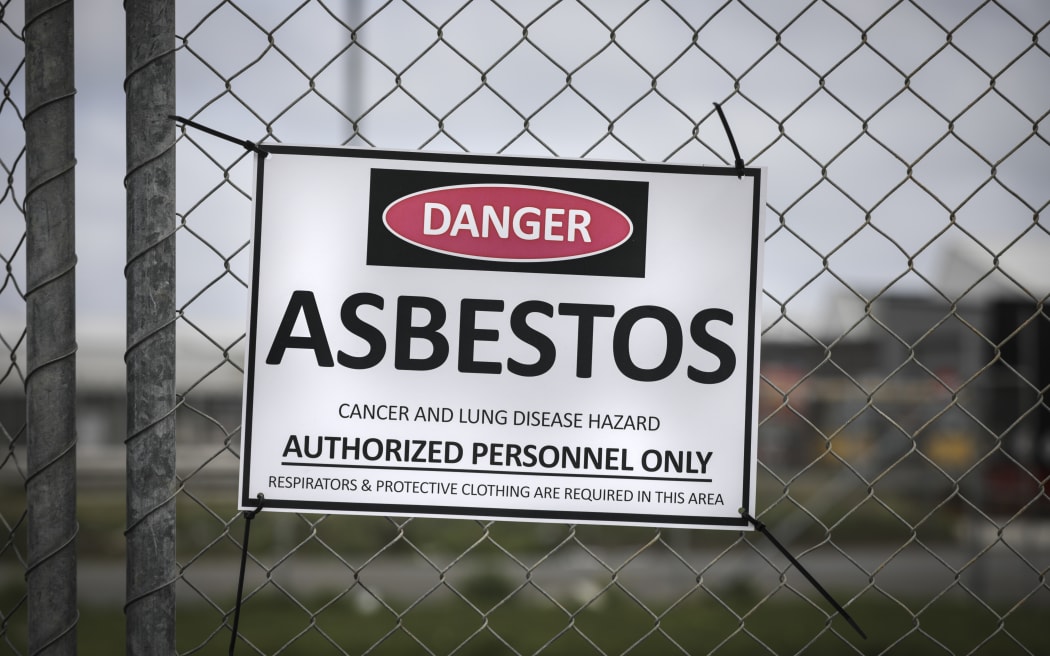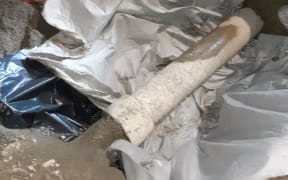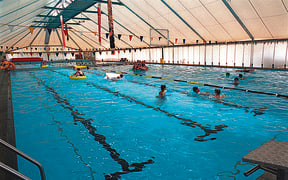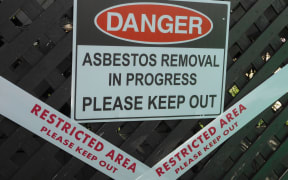
Temporary work and forms of flexible employment are contributing to more precarious work environments. Photo: RNZ / Rebekah Parsons-King
A review of the asbestos removal sector has found the number of workers exposed to the carcinogen is likely grossly underestimated.
The Asbestos Sector Review found better training and protections are needed for tradespeople and DIYers who may be inadvertently exposed to asbestos.
The New Zealand Demolition and Asbestos Association commissioned the comprehensive review to measure the industry's progress in relation to health and safety regulations.
Its president Helina Stil said the findings are confronting and that the industry is still highly fragmented with complicated and sometimes conflicting standards.
Stil said the popularity of temporary work and forms of flexible employment contributes to "more precarious work environments since health and safety laws may not apply".
"There is a massive inconsistency of standards across the board. It makes it very confusing for contractors and that also leads to risks for workers with these differing standards."
She said there was also no nationally consistent approach for asbestos management and removal to guide tradespeople and DIY-ers.
"I have a strong belief that there are a lot of workers that are potentially exposed to asbestos containing materials that may not be removalist workers but tradespeople or DIYers, given the lack of consistent info that's out there or a focal point where they can get that information."
But Stil said the number of such exposures were unknown and that agencies gathering data had no system to analyse or feed it back to the industry.
The association represents 2500 workers and commissioned asbestos and health and safety expert Mike Cosman to audit the sector.
He spent six months investigating and found asbestos awareness in the wider construction sector is still "generally low".
WorkSafe receives on average one asbestos notification per week from those trained in removing it.
Cosman said that "is likely to be a gross under-estimate of the true picture" because it does not include inadvertent exposure from those in other trades.
"There's no data about how many people are being exposed so we don't know how many people are in the licensed part of the a sector and how much of their time they're spending working with asbestos because it's a highly transient workforce."
He said the long lag time between exposure and developing asbestos related disease meant such data was not helpful to preventing exposure.
"That's why my recommendations are focused on trying to really drive down current exposures in the hope and expectation that will lead to a lower rate of disease in 20, 30, 40 years' time."
Health data indicates there are around 100 new diagnoses of the asbestos-related disease mesothelioma per year.
There was an assumption asbestos in buildings had been dealt, but in reality there was a lot asbestos in domestic, commercial and industrial buildings, Cosman told Morning Report.
"Workers are potentially at risk if they don't know it is present."
It was only banned from being imported into New Zealand in 2016 so the key message was test before undertaking demolition or refurbishment work, he said.
"Whilst we tend to say that the buildings that are most at risk are pre-2000, there's actually no guarantee that even buildings that have been constructed in the last 20 years may not have some asbestos-containing materials in them."
In the review Cosman said, "inadvertent exposure events continue to occur either due to a lack of information or a failure to pass this on to the right people, at the right time, and in the right way."
The review found the sector to be fragmented with high turnover rates.
"There are also parts of the wider asbestos ecosystem that appear to be operating with little oversight as to their practices and standards, such as training and equipment suppliers, medical practitioners providing asbestos medical examinations, and in the transport of asbestos waste."
Cosman said training for asbestos removal is costly with PPE and medical examinations.
"With no guarantee that workers entering the industry will stay, however, there is strong pressure to minimise these costs in a way that may lead to 'tick the box' compliance rather than delivering competent and safe workers."
He said a number of people, including trainers, said they were dissatisfied with the current training regime.
Cosman made 23 recommendations to improve safety and training, including setting up an Asbestos Industry Forum with representatives from WorkSafe and all parts of the sector to regularly discuss and review standards, interpretation, current issues and new developments.
Asbestos is a naturally occurring mineral made up of many small fibres that is used in some building materials. All forms of asbestos can cause cancer - the main way people are exposed to asbestos is by breathing in air that contains asbestos fibres.




